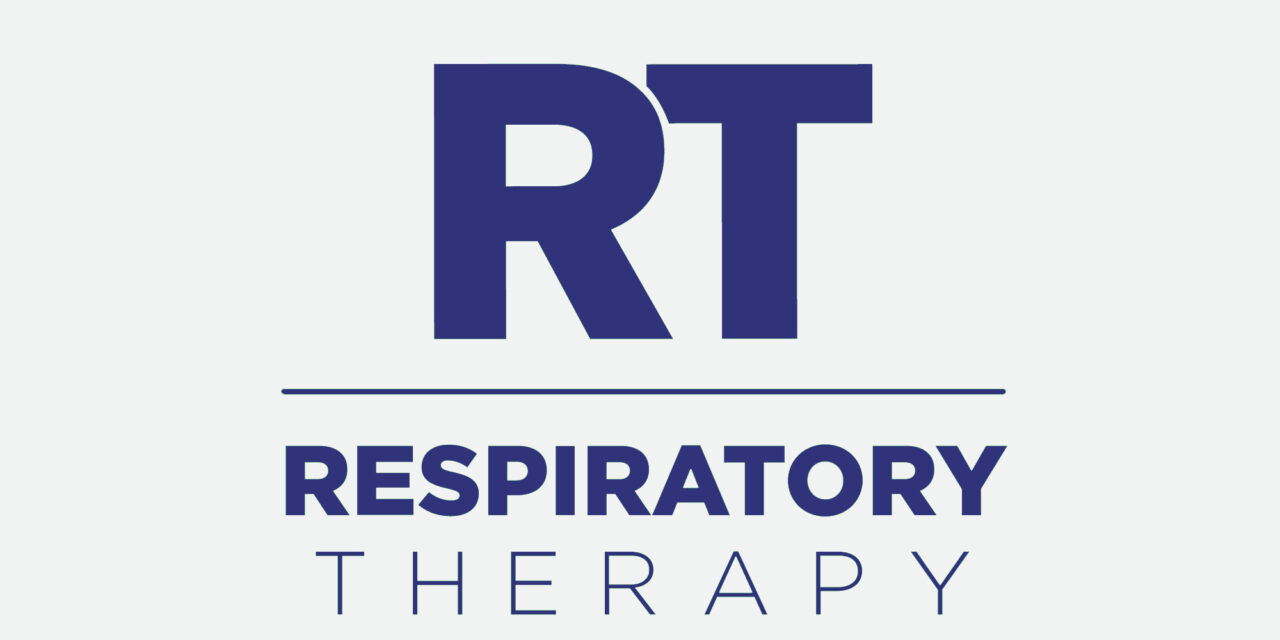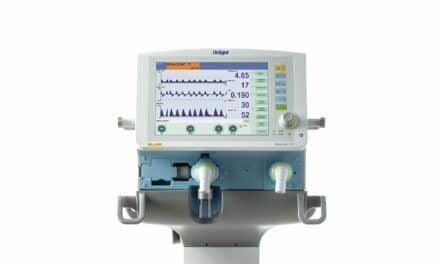The top priority of the American Thoracic Society’s new president, Edward R. Block, MD, is a smooth transition to ATS independence from the American Lung Association (ALA).
“I have to do everything I can to ensure a smooth transition from our current situation … to becoming an independently incorporated ATS outside the ALA, but still serving as its medical section and still having strong partnership ties,” Block says.
ATS wishes to succeed because “sometimes, the ALA’s rules are not comfortable for us, or are not in the direction we want to go,” Block says. The ATS, a 13,000-member organization that generates $14 million in revenues a year, “wants freedom to sign contracts and have control over our own money and our own staff and our own programs,” Block says.
Being independent will help increase the ATS’s efficiency and better serve its members, Block says. Negotiation sessions between the two groups are scheduled for September 1 through the first week of November.
“I would also like to make sure we begin a healing process-there has been some breakdown in trust between the two organizations during the past couple of years. I really want to make sure we reestablish that trust,” Block says.
Block also hopes to update the organization’s membership database by conducting a survey, and to increase membership in general. Increasing the visibility of international members, who comprise 27 percent of the ATS, will also be a goal. Ways to accomplish these goals are currently under discussion.
Block is Professor of Medicine, University of Florida College of Medicine, and Associate Chief of Staff for Research, VA Medical Center, Gainesville, Fla. Block succeeds Talmadge E. King, Jr, MD, of San Francisco, as president.
“When I first got involved in ATS in 1974, I saw it as quite an honor to be president, and I feel really honored to have it bestowed upon me,” Block says.
Clinical Lab Products Acquired by Medical World
Adding to its quickly growing Allied Healthcare Division, Medical World Communications Inc (MWC), Jamesburg, NJ, recently announced the acquisition of Clinical Lab Products (CLP), Amherst, NH, a 26-year-old product tabloid serving the diagnostic laboratory market. According to MWC Chairman and CEO John J. Hennessy, “MWC’s growth strategy is to acquire additional leading publications serving substantial health care market segments, including laboratory medicine. When CLP became available for purchase, we decided to move quickly to add this valuable asset to our expanding portfolio of leading journals. CLP will be integrated within MWC’s Allied Healthcare Publications Group, which includes other recent MWC acquisitions-CurAnt Communications (publishers of RT magazine), Novicom, and HealthTech publications.”
According to Allied Healthcare Group President Curtis Pickelle, the extension into the laboratory medicine arena is a natural one for the group, since it covers related and complementary disciplines for institutional settings. “Our customer base is primarily composed of medical device and equipment manufacturers … a consistency in which CLP has strong relationships and a long record of service,” he says.
Bankruptcy Means New Start for Allegheny
The June 21 declaration of bankruptcy by Philadelphia-based Allegheny Health, Education and Research Foundation, which ran nine area hospitals (including a medical school), leaves Allegheny’s future in question. Bids by two for-profit operators-Vanguard Health Systems and Tenet Healthcare Corp-have been made to purchase the hospital, but the MCP-Hahnemann School of Medicine has not been considered in either of those bids.
While the bankrupt medical school looks for private funding, arrangements have been made by the for-profit organizations to supplement operating costs for a few months until a physician billing system is established. Despite its uncertain future, the quality of care and service at the hospital is “incredibly good,” according to Stanley B. Fiel, MD, FCCP, Professor of Medicine and Chief of Pulmonary and Critical Care Medicine at MCP-Hahnemann School of Medicine.
“After the initial angst of the bankruptcy business, those [faculty] who are left have taken somewhat of a ‘pride and siege’ mentality,” he says. “Because of the bankruptcy, supplies are flowing again-it’s kind of a clean slate for everybody.” Fiel says that although initial patient occupancy was down, the pulmonary unit has remained full, and there has not been any attrition of respiratory support or ICU services.
As for the future of the respiratory care facilities, Fiel is optimistic. “In the restructuring, we will have the opportunity to improve the viability of respiratory care services, because of the importance of the ICU to the economic viability of the hospital.” Fiel hopes this will give respiratory care staff an opportunity to show administrators the importance of their role in the ICU. “I’m really looking forward to working with the new for-profit companies in strengthening the respiratory care role again,” Fiel says.
The Allegheny bankruptcy has been attributed to questionable decisions made by Allegheny’s board of trustees resulting in the accumulated $1.3 billion in debt. A significant portion of this debt was accrued through acquisitions of hospitals and physician practices some critics believe were overpriced, according to a recent report in Modern Healthcare.
As the largest employer in the Philadelphia region-responsible for about 240,000 jobs-the entire local health care industry is taking a step back to examine the events leading to Allegheny’s collapse. According to Henry Nicholas, president of Philadelphia’s District 1199C and the 17,000-member National Union of Hospital and Health Care Employees, Allegheny is just the tip of the iceberg. “As the health care market crashes, so does the local economy,” he says. In a Philadelphia Daily News story, experts cautioned that the region’s reputation as a leading educator and provider of health care could be tarnished by the bankruptcy and any further unraveling of the health care industry.
Relief Agency Donates Surplus Medical Equipment Overseas
Carelift International, a medical relief agency based in Bala Cynwyd, Pa, recently distributed 300 adult ventilators to needy hospitals overseas. The ventilators, donated by Pennsauken, NJ-based Mediq/PRN, will be used in Carelift’s hospital development program in countries such as Azerbaijan, Georgia, and Mongolia.
Carelift International is a medical relief agency that harvests surplus medical equipment, supplies, and pharmaceuticals from hospitals and manufacturers in the United States and distributes them to needy hospitals overseas. A majority of the devices also have been designated for use in the organization’s new ventilator training program in Bulgaria. Created in collaboration with Mediq/PRN in 1995, the ventilator training program enables American engineers to teach international professionals how to operate, fix, and maintain donated equipment, as well as how to train their colleagues. In addition to providing equipment and training, the Carelift program helps divert several tons of medical equipment that otherwise would end up in the nation’s waste stream. More information about the ventilator program is available through Mediq/PRN at (800) 222-4776.
Cable TV Series Explores Life with Allergies, Asthma
Kaleidoscope Television, San Antonio, and Schering Laboratories, Kenilworth, NJ, have launched Achievers-a new, 30-minute television series dedicated to people with respiratory disorders. This compelling 30-part series is the first of its kind, with true-life stories of people meeting and overcoming the challenges of allergies and asthma. Achievers uses television to reach a widespread audience and address these specific health problems. According to Richard W. Zahn, president of Schering Laboratories, more than 1 million Americans currently suffer from asthma. “The timing for the Achievers series has never been better,” he reports. “Television audiences want health information related to their own lives in an entertaining and easy-to-understand format-and Achievers does that.”
Docudrama in style, each story follows the journey of the patient, physician, family, and friends, as they learn to deal with allergies and asthma. These intimate portrayals show how individual “achievers” conquer their conditions with medical help and their own determination. Achievers will be carried several times a week on local cable systems throughout the United States. Schedules are available through Kaleidescope’s Web site at http://www.ktv-i.com.
New Film Documents Historical Roots of Pulmonary Medicine
A new film that traces the roots of pulmonary technology and the evolution of diseases throughout this century is currently in production. The History of Pulmonary Medicine, directed by Thomas L. Petty, MD, professor of medicine at the University of Colorado Health Sciences Center, Denver, and chairman of the National Lung Health Education Program (NLHEP), chronicles the technology used to treat and detect pulmonary diseases-the microscope, stethoscope, spirometer, chest X-ray, and other imaging techniques that have been developed since the 1800s. The film also documents how technology will change as the millennium approaches, and the evolution of diseases, ranging from tuberculosis to chronic obstructive pulmonary disease (COPD). The film concludes with a discussion of the causes of lung cancer, and what is being done to find a cure for the disease.
Filming in North America and Europe, Petty interviewed several experts who have contributed to the field of pulmonary medicine. “This is my story, and I wanted to document people who have made notable contributions to pulmonary medicine,” he explains. Petty hopes to debut the film, sponsored by Boehringer Engelheim, November 8-11 in Toronto at the annual meeting of the American College of Chest Physicians. Additional distribution details have not been determined.
Expanding Programs Tops New ALA President’s Agenda
Expanding the American Lung Association’s (ALA) programs is the main goal of new president Linda B. Ford, MD.
“The ALA really needs to expand its programs, particularly in asthma and environmental health,” Ford says.
The association is developing a program on indoor air quality and has just launched an asthma program for preschoolers, “A Is for Asthma.” Also in the works is the program “Open Airways for the Workplace,” which would be similar to the association’s current “Open Airways for Schools” program.
Another top priority, Ford says, is rejuvenating the ALA’s finances. “We’re in a struggle; we would have been in deficit if one third of our national office staff wasn’t laid off [last year]. That’s behind us, and we’re ready to get on with building the organization,” Ford says.
Hammering out the details of a proposed split between the ALA and the American Thoracic Society (ATS) also is on the agenda. “We will have a dialogue between us to see if it’s in the best interest of both organizations to have the split. Personally, I think we’re stronger as one organization,” she says.
One concern is that the two organizations will be competing for funding. “I want the ATS to survive and grow,” she says. “When you’re talking about two national organizations with boundaries and programs that are as similar [as ours], there will be some competition for funding, and that really worries me.”
Another concern if the two groups split is that the ALA would need to diversify its professional volunteer base by inviting members of other professional organizations to sit on ALA committees. So far, the response from other organizations has been positive, Ford says.
Ford, a specialist in allergy and immunology, has served on the ALA Board of Directors and Council since 1987. She also has been an ATS member since 1980. Ford succeeds Donald L. Clark, of Hartford, Conn, as president.
“It’s quite an honor and privilege to be president of the association, but a lot of hard work,” she says.
Emphysema Research Study Looking for Volunteers
In a recent landmark study performed at Georgetown University, Washington, DC, all-trans-retinoic acid (ATRA)-a derivative of vitamin A-was shown to completely regenerate damaged lung tissue in mature rats suffering from elastase-induced emphysema. Based on these animal studies, researchers at the University of California Los Angeles (UCLA) have designed a clinical trial to evaluate whether an oral form of ATRA will repair damaged lungs in patients with emphysema. This trial, funded by a private grant, has been approved as an investigational study by the FDA and by the UCLA Human Subject Protection Committee.
Researchers are looking for emphysema patients between the ages of 50 and 75 years old who live, or can travel to, the Los Angeles area for 6 months of extensive testing. The study will include 3 months of treatment with retinoic acid and 3 months with a placebo. Complete information on the study and additional requirements for participants are available through the UCLA School of Medicine, (310) 206-0396.
Research Grants and Funds Now Available Through ARCF
The Executive Office of the American Respiratory Care Foundation (ARCF) has announced the availability of research grants and funds for qualified investigators in the field of respiratory care. Interested parties may contact the ARCF office to request an application for one of the programs listed below. Applications are accepted year-round, and funding decisions are made by ARCF Trustees.
- Parker B. Francis Respiratory Research Grant: Provides financial assistance for research programs dealing with respiratory care and related topics.
- Jerome M. Sullivan Research Fund: Provides financial assistance for original research contributions by respiratory care practitioners to the body of knowledge comprising respiratory care.
- H. Frederic Helmholz, Jr, MD, Educational Research Fund: Up to $3,000 for educational or credentialing research. A master’s thesis, doctoral dissertation, or a complete research proposal with practical value to the respiratory care profession is an acceptable submission.
Specific grant information is available at (972) 243-2272, or by visiting the ARCF Web site at http://www.aarc.org.
Experts Outline New International Guidelines for Lung Transplantation
An expert panel of transplant physicians and surgeons representing the International Society of Heart and Lung Transplantation, the American Society of Transplant Physicians, the American Thoracic Society, the European Respiratory Society, and the Thoracic Society of Australia and New Zealand, recently released new international guidelines for lung transplantation. Internationally, there are far fewer donor organs available than patients with end-stage lung disease. According to the guidelines, many candidates die on the waiting list, or have a lower transplant success rate because of the extensive waiting period.
The first section of the two-part document discusses general health guidelines that all candidates for lung transplantation should meet. The second section describes disease-specific exercises or lung function criteria that identify patients whose poor prognosis from underlying diseases justifies transplantation. Candidates for either live donor organs or cadaver donor organs should meet the same selection criteria, according to these guidelines.
The guidelines-created to help ensure fair distribution of the limited supply of donor organs-appeared in the July issue of the American Journal of Respiratory and Critical Care Medicine.
Research Reports
- A new study published by the American Lung Association suggests that current or ex-smokers who have an immediate family member with severe, early-onset chronic obstructive pulmonary disease are three times as likely to develop lung problems themselves, compared with current or ex-smokers from the general population.
- Researchers who analyzed data from 129 adults with asthma found that individuals who had regular environmental exposure to tobacco smoke over the 18-month study period had greater asthma severity, worse asthma-specific quality of life, poorer physical health, and more health care utilization associated with the disease. The study appeared in the July issue of the American Journal of Respiratory and Critical Care Medicine.
- Older, malnourished men with chronic obstructive pulmonary disease (COPD) benefited from the same type of controversial drug that athletes sometimes use to increase muscle and enhance performance, according to a recent study, “The Influence of Six Months of Oral Anabolic Steroids on Body Mass and Respiratory Muscles in Undernourished Individuals with COPD.” The study appeared in the August issue of Chest.
- Biomedical scientists who studied 87 families with at least one asthmatic family member discovered that significant genetic or environmentally mediated influences came from the mother. The data, printed in the July issue of American Journal of Respiratory and Critical Care Medicine, suggest that lung function inheritance is determined by the action of several different genes that can interact with several nongenetic factors. In family members with asthma, the major correlation for lung function between and among the generations was maternal.
- Damaging noise levels in the medical ICU that often reach the level of a noisy subway ride were reduced significantly through behavioral modification sessions for the staff, according to a study published in the August issue of Chest.










